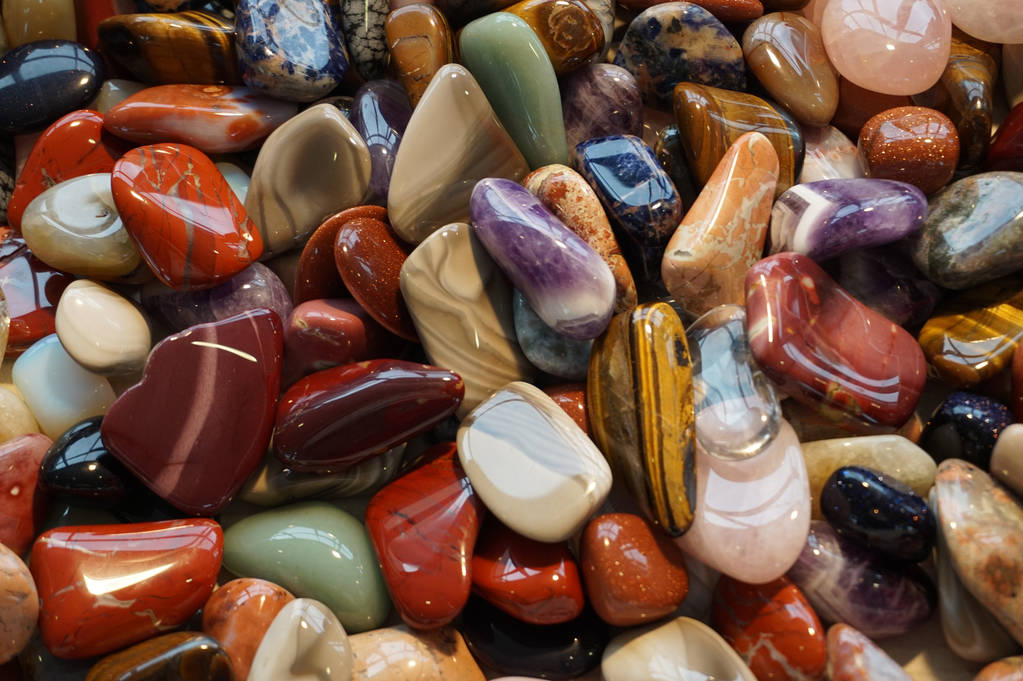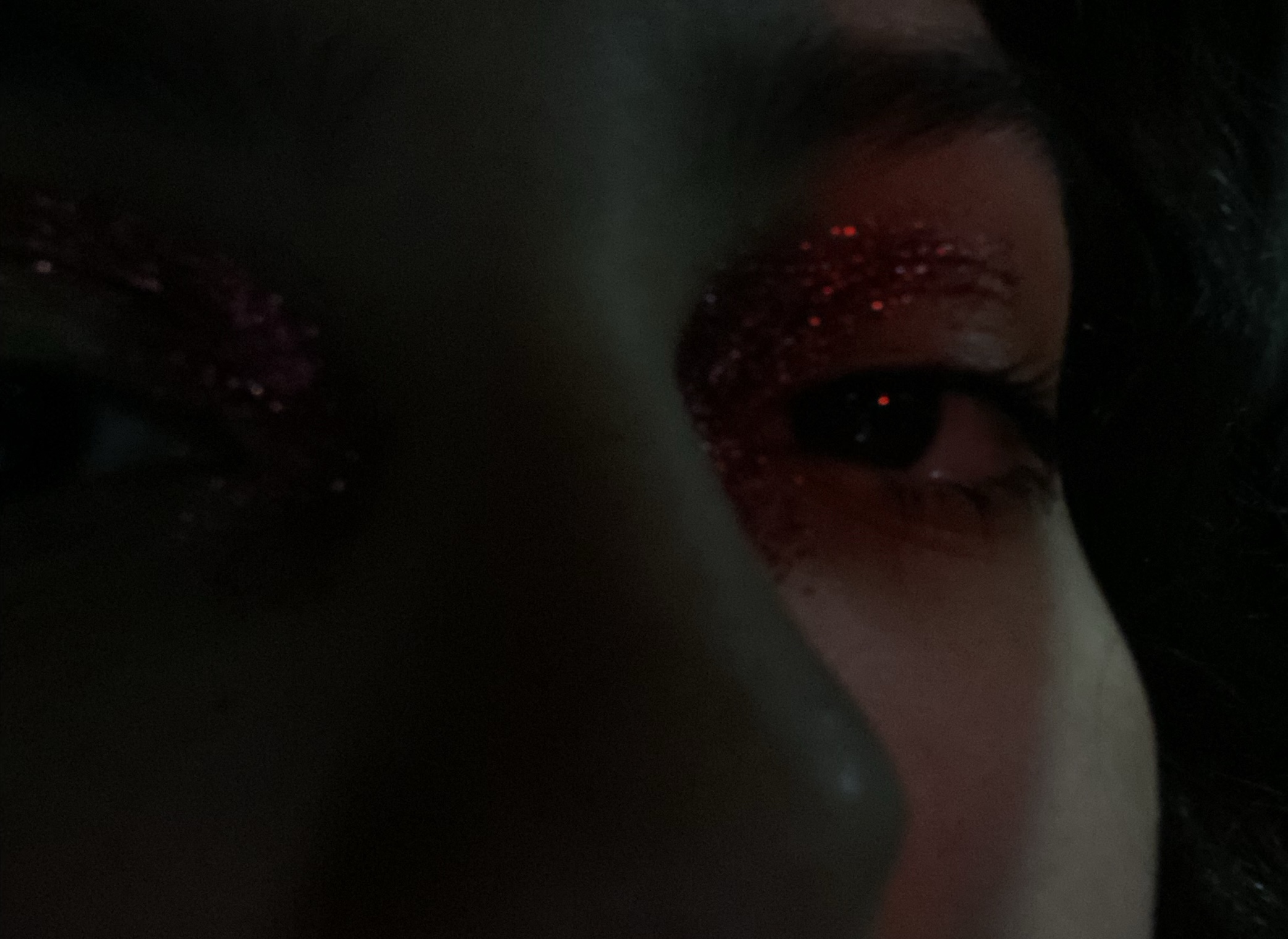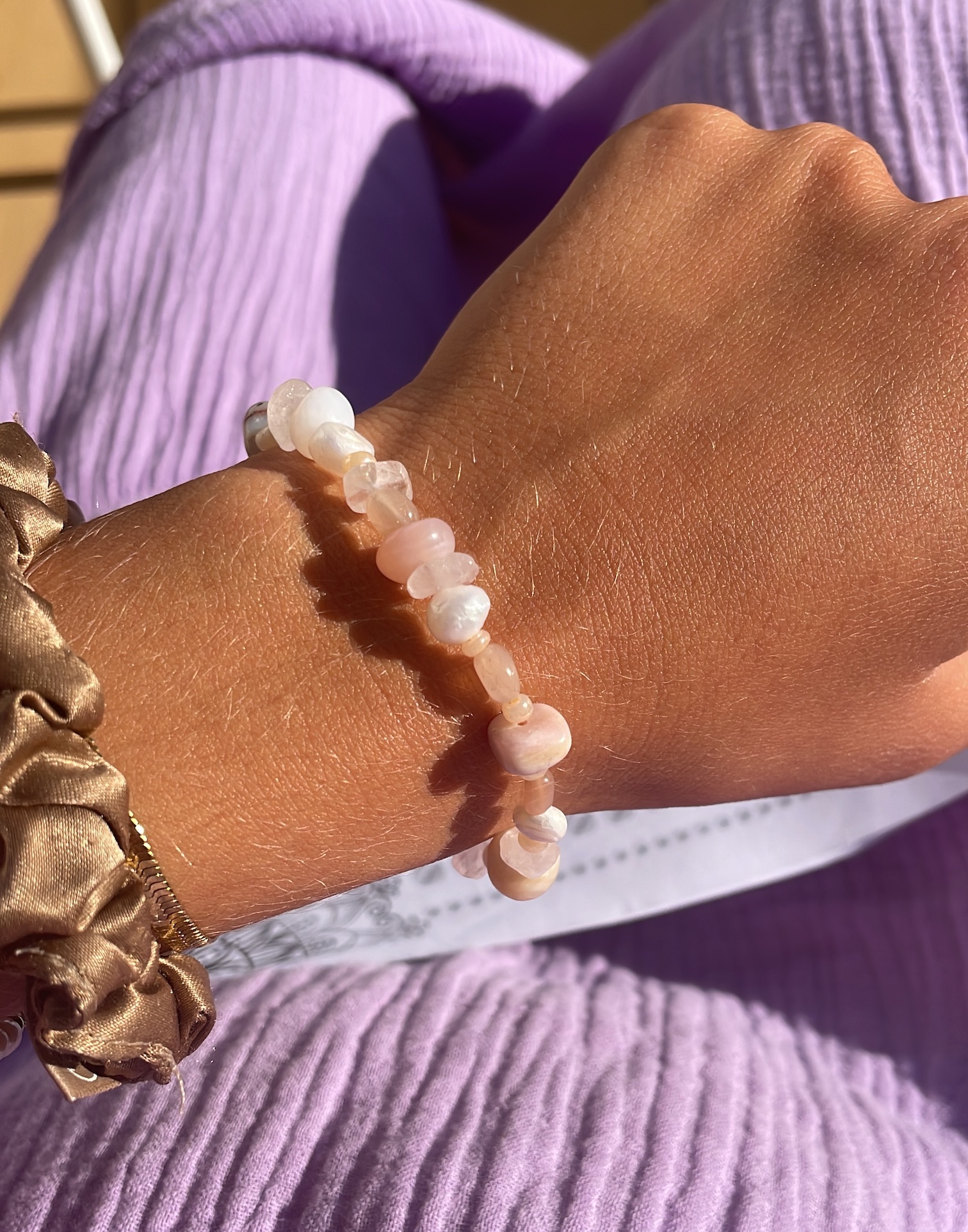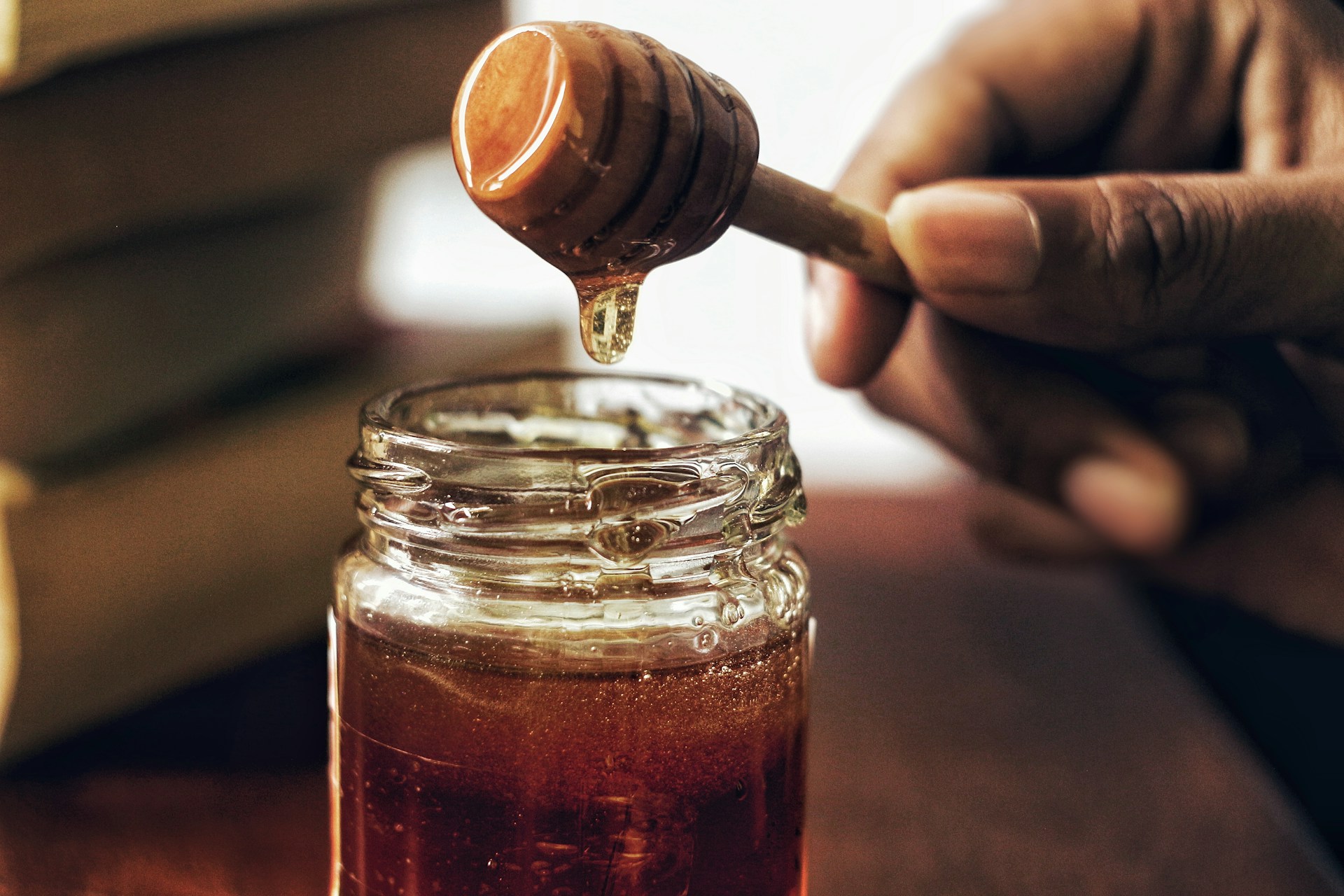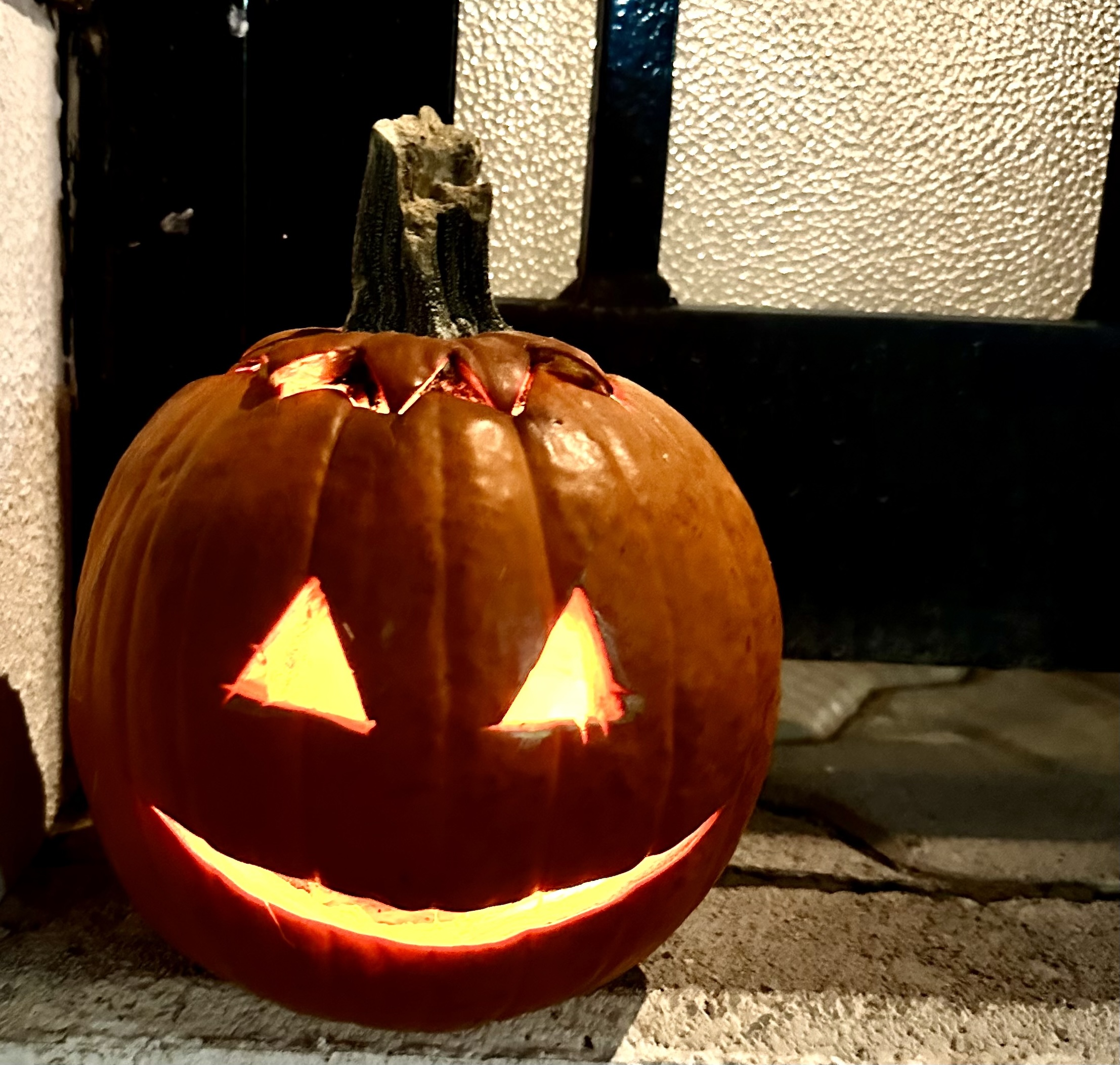Crystals? Stones? Gems? Rocks? What’s the difference?
If you’ve ever wandered into a crystal shop or been intrigued by the magical properties of stones, you’ve probably found yourself asking, “What’s the difference between these crystals, stones, gems, and rocks?” Are they just different names for the same shiny thing, or are there subtle distinctions between them that matter for your metaphysical practice?
The “Official” Definitions
I’m going to use the good old Oxford English dictionary as the standard definition of these words:
Crystal: A piece of a homogeneous solid substance having a natural geometrically regular form with symmetrically arranged plane faces.
Gem(stone): A precious or semiprecious stone, especially when cut and polished or engraved.
Rock: The solid mineral material forming part of the surface of the earth and other similar planets, exposed on the surface or underlying the soil or oceans.
Stone: A hard solid nonmetallic mineral matter of which rock is made, especially as a building material.
Okay… That’s a lot of jargon. If you understand with those definitions alone, good for you! If not, I’ll try my best to explain it.
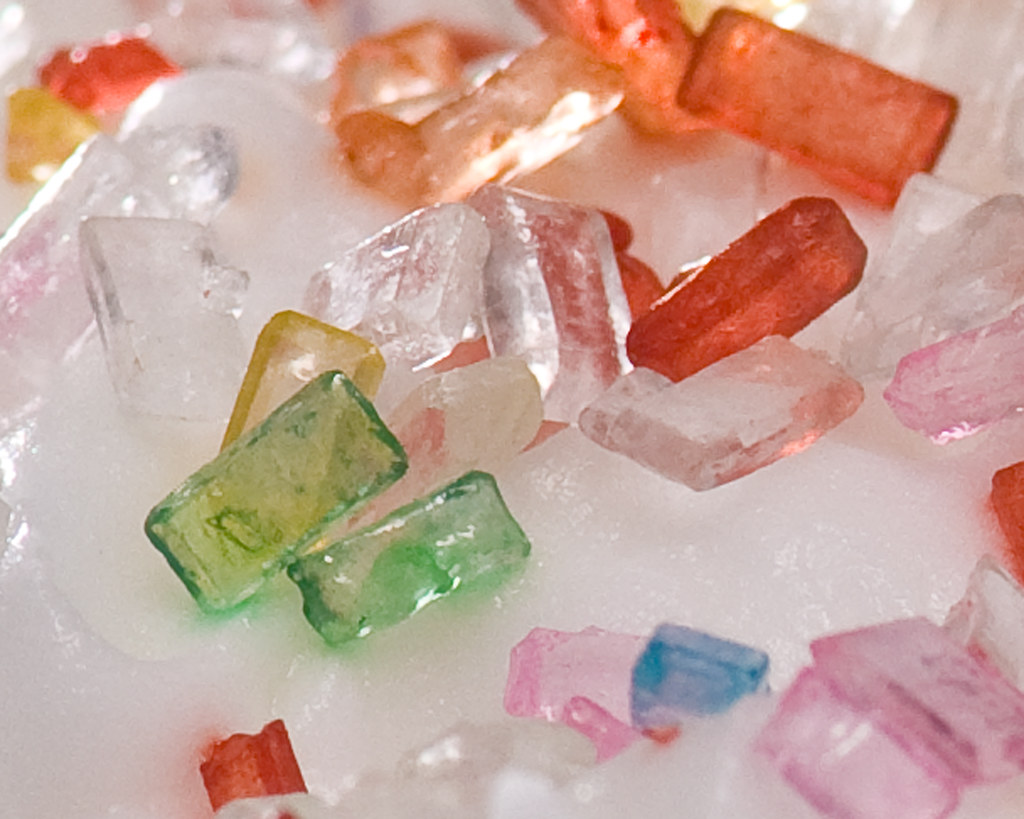
What is a Crystal?
A crystal stands out due to its unique internal structure, defined by a repeating geometric pattern at the molecular level. This arrangement results in those familiar faceted faces we admire in quartz clusters and amethyst points. The repeating pattern is called a crystal lattice and gives the material its characteristic hardness and symmetrical shape.
But crystals aren’t limited to the glimmering specimens in shops. Salt, sugar, and snowflakes all share the same orderly structure. Salt is often used in protective spells, and its crystalline structure makes it an excellent energy conduit. Sugar crystals can be used in sweetening spells, and snowflakes possess unique fractal patterns that represent individual beauty.
How Crystals Are Formed
Crystals are often formed through cooling molten minerals or the evaporation of water containing dissolved minerals. Geodes, for instance, are created when mineral-rich water seeps into hollow spaces within rock formations and slowly evaporates, leaving behind dazzling crystals like quartz and amethyst. Crystals also form when heat and pressure cause minerals to recrystallize, resulting in specimens like garnets and beryls.
Crystals in Magickal Practices
Crystals are valued for their energetic properties and unique vibrations. Clear quartz, for instance, is considered a master healer that amplifies energy, while rose quartz is often associated with love and emotional healing. Understanding how a crystal’s internal lattice interacts with your energy can help you choose the right stone for your intentions.
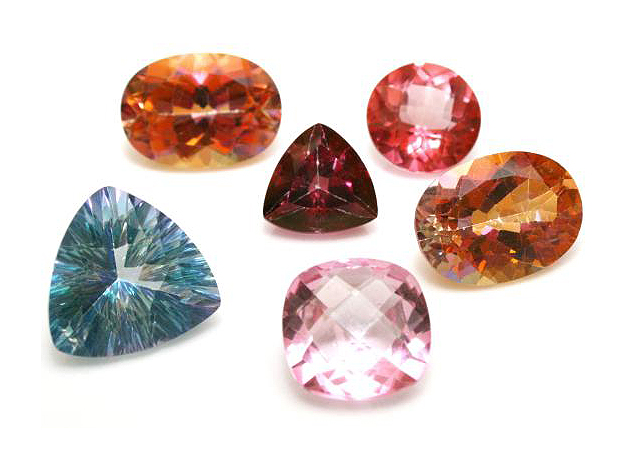
What is a Gem?
Gems are stones that are prized for their beauty, rarity, and value. Their classification hinges on the cultural and economic value assigned to them rather than their specific composition or origin. They’re typically grouped as either precious or semi-precious based on their market demand and perceived worth.
Types of Gems
- Precious Gems: Diamonds, emeralds, rubies, and sapphires belong to this group due to their historical significance and high value.
- Semi-Precious Gems: Include amethyst, turquoise, garnet, and many other beautiful stones that don’t command the same high prices.
While most gems are mineral-based, some, like pearls, amber, and coral, are organic. Pearls come from oysters and mussels, amber is fossilized tree resin, and coral is the skeletal structure of marine organisms. Each carries its distinct symbolism and energy.
Gems in Magick
Gems, thanks to their clarity and value, are thought to channel potent energies. Diamonds are known for enhancing spiritual clarity and protecting against negative influences, while emeralds are associated with prosperity, fertility, and eternal life.
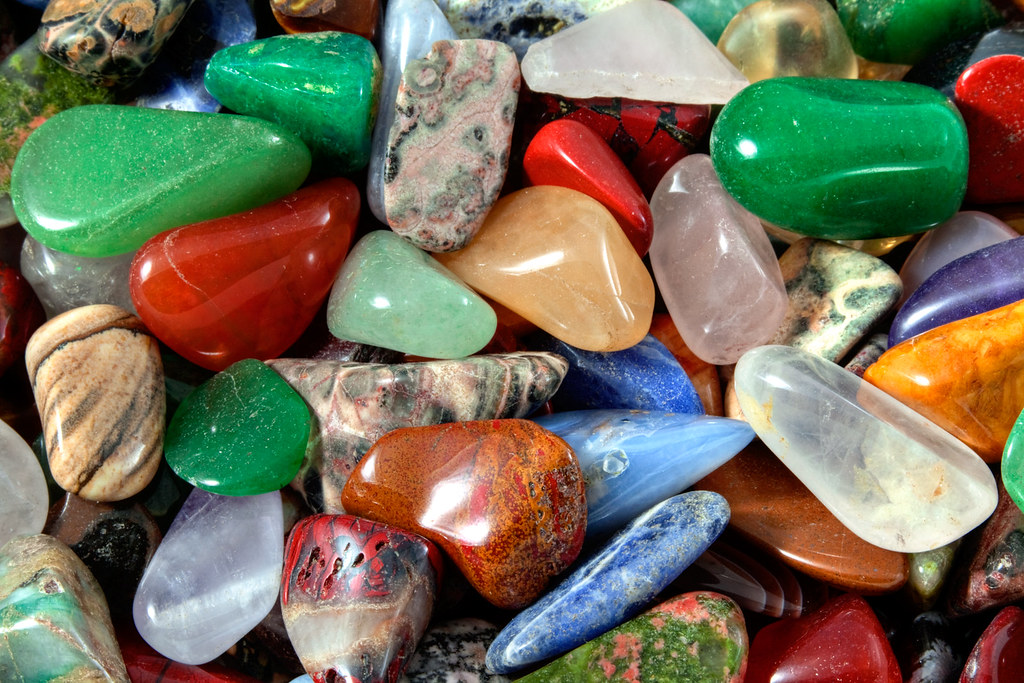
What is a Stone?
Stones encompass a broad range of mineral matter and often include gems and crystals. The word “stone” implies any hard, solid, non-metallic mineral substance, whether used for jewelry, construction, or ritual purposes. Stones can vary in size and application, from massive blocks of granite used in architecture to smooth pebbles collected from riverbanks.
Mineral Stones
Minerals, naturally occurring inorganic substances with a consistent structure and composition, form the basis of many stones. Think of calcite, fluorite, and pyrite, each with its distinct vibrational qualities and magickal uses.
The Role of Stones in Magick
In magick, stones are used for their grounding and stabilizing properties. Hematite is often associated with shielding and grounding energy, while labradorite is prized for its protective qualities. Stones can be integrated into spellwork, meditation, and altar arrangements to align intentions with their specific energies.

What is a Rock?
Rocks are naturally occurring solid aggregates of minerals and other materials. Unlike stones, which may be shaped and polished for specific purposes, rocks are found in nature as they are, forming the earth’s crust. They are categorized into three main types based on their formation process:
- Igneous Rocks: Formed from cooled molten minerals. Examples include granite and basalt.
- Sedimentary Rocks: Created from layers of deposited sediment. Examples include sandstone and limestone.
- Metamorphic Rocks: Transformed from existing rock through heat and pressure. Examples include slate and marble.
Rocks in Magick
Rocks are sometimes overlooked in magickal practices but carry the collective energy of the earth. They can be incorporated into grounding rituals, spell circles, or used as talismans to draw upon elemental power.
How to Remember the Differences
With these definitions in mind, let’s break down the distinctions:
- Crystals: Defined by their internal geometric structure and include everything from quartz to snowflakes.
- Gems: Valued for their rarity and beauty, usually classified as precious or semi-precious stones.
- Stones: The most general term, encompassing crystals, gems, and rocks.
- Rocks: Naturally occurring solid mineral materials that often contain multiple minerals.
FAQs About Crystals, Stones, Gems, and Rocks
Q: Are crystals and stones the same?
A: While all crystals can be considered stones due to their mineral makeup, not all stones are crystals. The defining feature of a crystal is its repeating geometric lattice structure.
Q: Are all gemstones precious?
A: Not all gemstones are considered precious. Diamonds, rubies, emeralds, and sapphires are historically regarded as precious, while many other gems are categorized as semi-precious.
Q: Is a diamond a crystal?
A: Yes, diamonds are a form of carbon arranged in a repeating lattice structure, making them a crystal. They are also classified as a gemstone due to their rarity and value.
Q: How can I choose the right crystal or stone for my practice?
A: Start by identifying your intention. If you’re seeking love, rose quartz might resonate with you. For grounding, try smoky quartz or hematite. Trust your intuition when choosing crystals.
Final Thoughts
Understanding the differences between crystals, stones, gems, and rocks isn’t just a lesson in semantics. Each type offers unique energies and properties that can elevate your magickal practice. Whether you’re using clear quartz for amplification, an emerald for abundance, or simply collecting a humble pebble that speaks to your spirit, these mineral wonders can be powerful allies in your spiritual toolkit.
Further reading
I’ll be the first to admit that I am not an expert on this subject at all! Rather, I consulted a wide variety of sources to compile into this post. If you’re looking to do some further reading on stones and their roles in witchcraft, here are some books to check out:
- Crystal Clear by Jaya Saxena
- The Little Book of Crystals by Astrid Carvel



